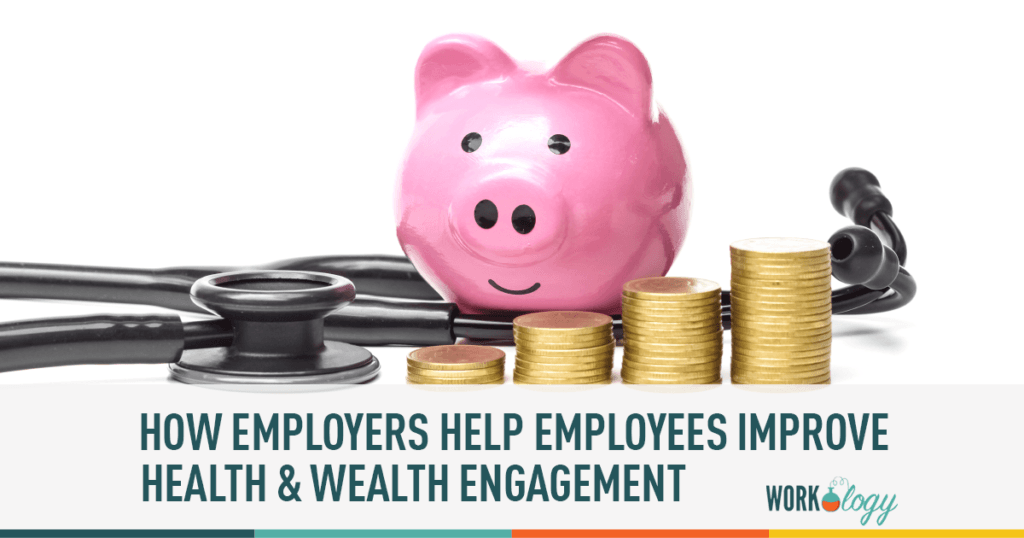This post is sponsored by HSA Bank empowering employees and employers to do make the most of their healthcare dollars. See our FTC disclosure at the end.
It is crucial for them to concentrate on both their physical and financial health because the costs and expenses of healthcare services for both individuals and businesses are rising. Physical health and its associated consequences are a top concern for workers who are approaching retirement age, especially the baby boomer generation. Many folks are being forced to work much past the normal retirement age because of this unease. The expense of healthcare for employers and their employees is also rising as a result of this trend. This applies to everyone who is a part of an employer-sponsored healthcare plan, not just the specific employee.
When exiting employees receive their COBRA notices or as part of their research and plan evaluation process during the ACA enrollment period, many employees are taken aback by the cost of healthcare benefit premiums.
In my opinion, it is our duty as employers to inform workers not only about the prices of healthcare plans, but also—and perhaps more importantly—about how they can manage their healthcare expenditures in addition to their physical well-being. Both are crucial in assisting people in getting ready to balance the choices and expenses related to healthy living and healthcare.
However, more than education is needed. Employers and plan sponsors must seek out actionable ways to measure and improve employee engagement when it comes to physical and financial health.
One great resource I recommend is the HSA Bank Health & Wealth IndexSM
. This resource helps to raise awareness of gaps in the knowledge and behaviors of your workforce when it comes to physical and financial well-being. The calculator tool provides a personalized starting point for employees with actionable recommendations to increase engagement. The goal of these tools is to encourage employees to think and act differently, specifically for the long term.
How Employers Can Help Employees Improve Health and Wealth Engagement
Sixty-five percent of consumers are aware of how much they’ll need to pay for cost sharing like copays and deductibles under their current health plan, according to the HSA Bank Health & Wealth IndexSM
SM. However, this same report shows that fewer consumers (only 59 percent) save money for future healthcare expenses, perhaps because 83 percent feel that their health plan coverage helps them attain the medical services needed at a manageable cost. Another insight from the report is that 35 percent of subjects in the study never even consider cost when selecting health services.
In actuality, these same customers are also your staff. Additionally, this planning and education component is essential because it will have an impact on both our current and future workforce and because money are a major source of household stress.
Because you and I have both worked in HR, this lack of financial planning or knowledge of the maximums, minimums, and costs of benefit programs probably isn’t a surprise to you. We have dealt with COBRA discussions, managed health plans, and annual benefits agreements. We realize that knowing this information is crucial for budgeting and managing future healthcare costs, but we also know from personal experience how frequently employees don’t consider this until it’s too late.
There is definitely room for improvement in terms of employees healthcare plan knowledge. Working with your plan provider and company benefits expert to invest in education and resources is critical for helping to answer employee questions before they are impacted financially.
The good news is that I’ve found that most employees are willing to make changes once they understand the cost implications, and HSA Bank’s report supports this. Ninety-three percent of those surveyed received at least one preventative health service or screening annually. Many more are willing to make other lifestyle changes that in turn lower healthcare expenses for the individual, which also by default benefits the larger employee population on the company sponsored benefit plan.
Most surveyed (86 percent) believe they have made lifestyle changes to improve their health in the past year. They are open and willing to make some changes. Employers and health services providers can help consumers improve their health and finances by providing resources that support these efforts.
The Keys to Improving Employees’ Health and Wealth
The majority (70 percent) of surveyed consumers indicated that they are moderately to highly engaged when it comes to physical and financial well-being; HSA Bank recommends targeting this population to have the greatest impact on health and wealth engagement. These employees are likely to take further steps to improve their health and financial well-being given their current level of engagement. The alternative is to target employees who are minimally engaged, but with these employees making up only 7.4 percent of those surveyed, HSA Bank recommends casting a wider net.
These targeted programs are most effective if they support employees in making small changes instead of taking all steps at once. This type of actionable guidance can have a big impact on employees’ physical and financial future. Start by assessing employees’ engagement levels to determine how to implement the most effective benefit programs.
Read more in HSA Bank’s report (available here), or use their calculator to see where you and your employees fall on the health and wellness index.
*A special thank you to this article’s sponsor, HSA Bank.
FTC Disclosure: Xceptional HR Consulting received compensation for mentioning the product listed above as part of one of the services offer clients and readers. We only recommend products or services we use personally and believe will be good for our readership. We are disclosing this in accordance with the Federal Trade Commission 16 CFR, Part 255: Guides Concerning the Use of Endorsements and Testimonials in Advertising.








